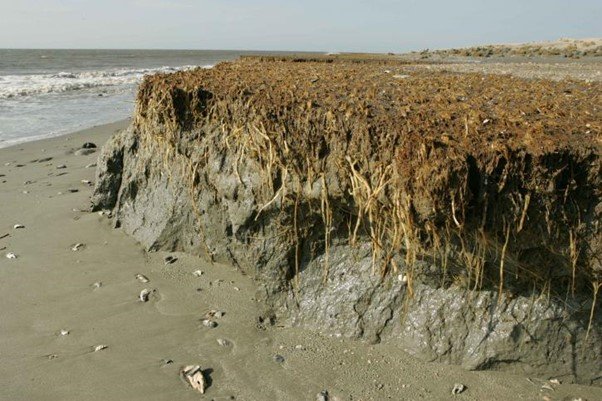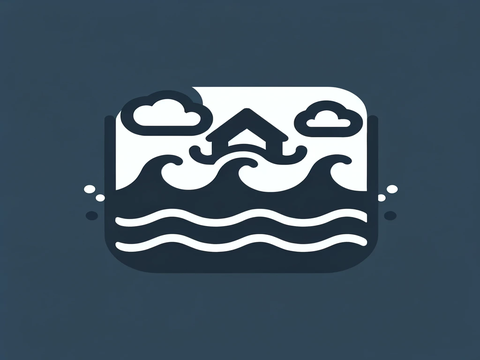Erosion
Erosion is the removal of surface material from Earth’s crust, primarily soil and rock debris, and the transportation of the eroded materials by natural agencies (such as water or wind) from the point of removal. Erosion can be caused by various factors, such as rainfall, wind, waves, glaciers, and human activities (UNDRR, 2017).

Types of Erosion
Soil erosion
The loss of topsoil due to water, wind, or tillage.
Coastal erosion
The loss of coastal lands due to the action of sea waves, currents, tides, and storms.
Chemical erosion
The alteration of rock or soil due to chemical reactions, such as dissolution, oxidation, or hydrolysis.
Physical erosion
The breakdown of rock or soil due to mechanical forces, such as abrasion, frost, or biological activity (UNDRR, 2017).
Secondary hazards

Environmental Contamination
Examples of Traditional and Indigenous knowledge
- In India, many tribal and rural communities have developed indigenous knowledge and practices to prevent and control soil erosion, such as contour bunding, terracing, mulching, crop rotation, agroforestry, and water harvesting (Dhall) (Mahesh, 2023).

- In the Andes, the indigenous Quechua and Aymara people construct stone walls along the slopes to create terraces that reduce soil erosion and increase agricultural land. These terraces also create microclimates that allow the cultivation of diverse crops and the conservation of biodiversity (BRONEN, 2011).

- In the Arctic, the indigenous Inuit people have adapted to the coastal erosion caused by climate change by relocating their communities to safer locations, using traditional knowledge and skills to build new homes and infrastructure, and engaging in participatory planning and decision-making with government agencies (Coggins, Ford, & al, 2021)
References
BRONEN, R. (2011). CLIMATE-INDUCED COMMUNITY RELOCATIONS: CREATING AN ADAPTIVE GOVERNANCE FRAMEWORK BASED IN HUMAN RIGHTS DOCTRINE. Retrieved from UNFCC: https://unfccc.int/files/adaptation/groups_committees/loss_and_damage_executive_committee/application/pdf/bronen_climate_induced_community_relocations_creating_an__adaptive_governance_framework_based_in_human_rights_doctrine_2011.pdf
Coggins, S., Ford, J. D., & al, e. (2021). Indigenous Peoples and Climate Justice in the Arctic. Retrieved from Georgetown Journal of International Affairs: https://gjia.georgetown.edu/2021/02/23/indigenous-peoples-and-climate-justice-in-the-arctic/
Dhall, M. (n.d.). Indigenous Knowledge and Sustainability. Retrieved from TRIBAL CULTURES OF INDIA: https://ebooks.inflibnet.ac.in/antp05/chapter/indigenous-knowledge-and-sustainability/
Mahesh, G. (2023). Communication and dissemination of India’s traditional knowledge. Retrieved from Indian Journal of Traditional Knowledge: https://nopr.niscpr.res.in/bitstream/123456789/62167/1/IJTK%2022%282%29%20450-457.pdf
UNDRR. (2017). Disaster Risk Reduction Terminology. Retrieved from The Disaster Risk Reduction (DRR) Glossary: https://www.undrr.org/drr-glossary/terminology


